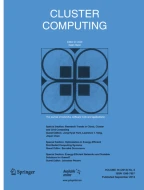Abstract
The temporal variability monthly precipitation time series for Korea is decomposed using singular spectrum analysis (SSA) to detect hidden periodicity information in the data, and to compare the forecasting performance of combining linear recurrent formulas (LRFs) and artificial neural networks (ANNs). The SSA technique is used on monthly precipitation data to decompose and reconstruct the components, including a special inerratic feature for reconstruction and successful forecasting using LRF and ANN analysis. These components obtained using SSA indicate the behavior of the monthly precipitation data as a trend, or as periodic and/or quasi-periodic oscillations. The LRF and ANN methods were applied to several leading components to forecast the monthly precipitation. Results show that reconstruction and forecasting using the SSA-ANN model is more accurate than using the SSA-LRF model, especially for peak value forecasting. This validates the use of the SSA-ANN combined model for effective reconstruction and forecasting of monthly precipitation.








Similar content being viewed by others
References
Gong, D.Y., Wang, S.W.: Severe summer rainfall in China associated with enhanced global warming. Clim. Res. 16, 51–59 (2000)
Huntington, T.G.: Evidence for intensification of the global water cycle: review and synthesis. J. Hydrol. 319, 83–95 (2006)
Oki, T., Kanae, S.: Global hydrological cycles and world water resources. Science 313, 1068 (2006)
Sun, M., Kim, G.: Quantitative monthly precipitation forecasting using cyclostationary empirical orthogonal function and canonical correlation analysis. J. Hydrol. Eng. 21, 04015045 (2016)
Silverman, D., Dracup, J.A.: Artificial neural networks and long-range precipitation prediction in California. J. Appl. Meteorol. 39, 57–66 (2000)
Hux, J.D., Knappenberger, P.C., Michaels, P.J., Stenger, P.J., Cobb Iii, H.D., Rusnak, M.P.: Development of a discriminant analysis mixed precipitation (DAMP) forecast model for mid-Atlantic winter storms. Weather Forecast. 16, 248–260 (2001)
Block, P., Rajagopalan, B.: Interannual variability and ensemble forecast of Upper Blue Nile Basin Kiremt season precipitation. J. Hydrometeorol. 8, 327 (2007)
Wang, B., Ding, Q., Jhun, J.G.: Trends in Seoul (1778–2004) summer precipitation. Geophys. Res. Lett. 33, 292–306 (2006)
Webster, P.J., Hoyos, C.: Prediction of monsoon rainfall and river discharge on 15–30-day time scales. Bull. Am. Meteorol. Soc. 85, 1745–1765 (2004)
Gao, Y., Qu, C., Zhang, K.: A hybrid method based on singular spectrum analysis, firefly algorithm, and BP neural network for short-term wind speed forecasting. Energies 9, 757 (2016)
Ma, X., Jin, Y., Dong, Q.: A generalized dynamic fuzzy neural network based on singular spectrum analysis optimized by brain storm optimization for short-term wind speed forecasting. Appl. Soft Comput. 54, 296–312 (2017)
Shukla, S., Yadav, K.P.: Forecasting Indian Stock Market Index Using Singular Spectrum Analysis: A Comparison with ARIMA and Artificial Neural Network. Social Science Electronic Publishing, Rochester (2017)
Yu, C., Li, Y., Zhang, M.: An improved Wavelet Transform using Singular Spectrum Analysis for wind speed forecasting based on Elman Neural Network. Energy Convers. Manag. 148, 895–904 (2017)
Hassani, H.: Singular spectrum analysis: methodology and comparison. J. Data Sci. 5, 239–257 (2007)
Baratta, D., Cicioni, G., Masulli, F., Studer, L.: Application of an ensemble technique based on singular spectrum analysis to daily rainfall forecasting. Neural Netw. 16, 375 (2003)
Marques, C.a.F., Ferreira J.A., Rocha A., Castanheira J.M., Melo-Gonçalves P., Vaz N., Dias J.M.: Singular spectrum analysis and forecasting of hydrological time series. Phys. Chem. Earth 31, 1172–1179 (2006)
Golyandina, N. (2001) Analysis of Time Series Structure: SSA and Related Techniques. Chapman & Hall/CRC, Boca Raton
Coulibaly, P., Anctil, F., Aravena, R., Bobée, B.: Artificial neural network modeling of water table depth fluctuations. Water Resour. Res. 37, 885–896 (2001)
Agarwal, A., Mishra, S.K., Ram, S., Singh, J.K.: Simulation of runoff and sediment yield using artificial neural networks. Biosyst. Eng. 94, 597–613 (2006)
Govindaraju, R.S., Rao, A.R.: Artificial neural networks in hydrology. J. Hydrol. Eng. 5, 124–137 (2000)
Singh, K.P., Basant, A., Malik, A., Jain, G.: Artificial neural network modeling of the river water quality–a case study. Ecol. Model. 220, 888–895 (2009)
Acknowledgements
This work was supported by National Natural Science Foundation of China (41771531), National Key Research and Development Program in China (2016YFC0503007), and the Major Science and Technology Program for Water Pollution Control and Treatment in China (2014ZX07203010).
Author information
Authors and Affiliations
Corresponding author
Rights and permissions
About this article
Cite this article
Sun, M., Li, X. & Kim, G. Precipitation analysis and forecasting using singular spectrum analysis with artificial neural networks. Cluster Comput 22 (Suppl 5), 12633–12640 (2019). https://doi.org/10.1007/s10586-018-1713-2
Received:
Revised:
Accepted:
Published:
Issue Date:
DOI: https://doi.org/10.1007/s10586-018-1713-2



